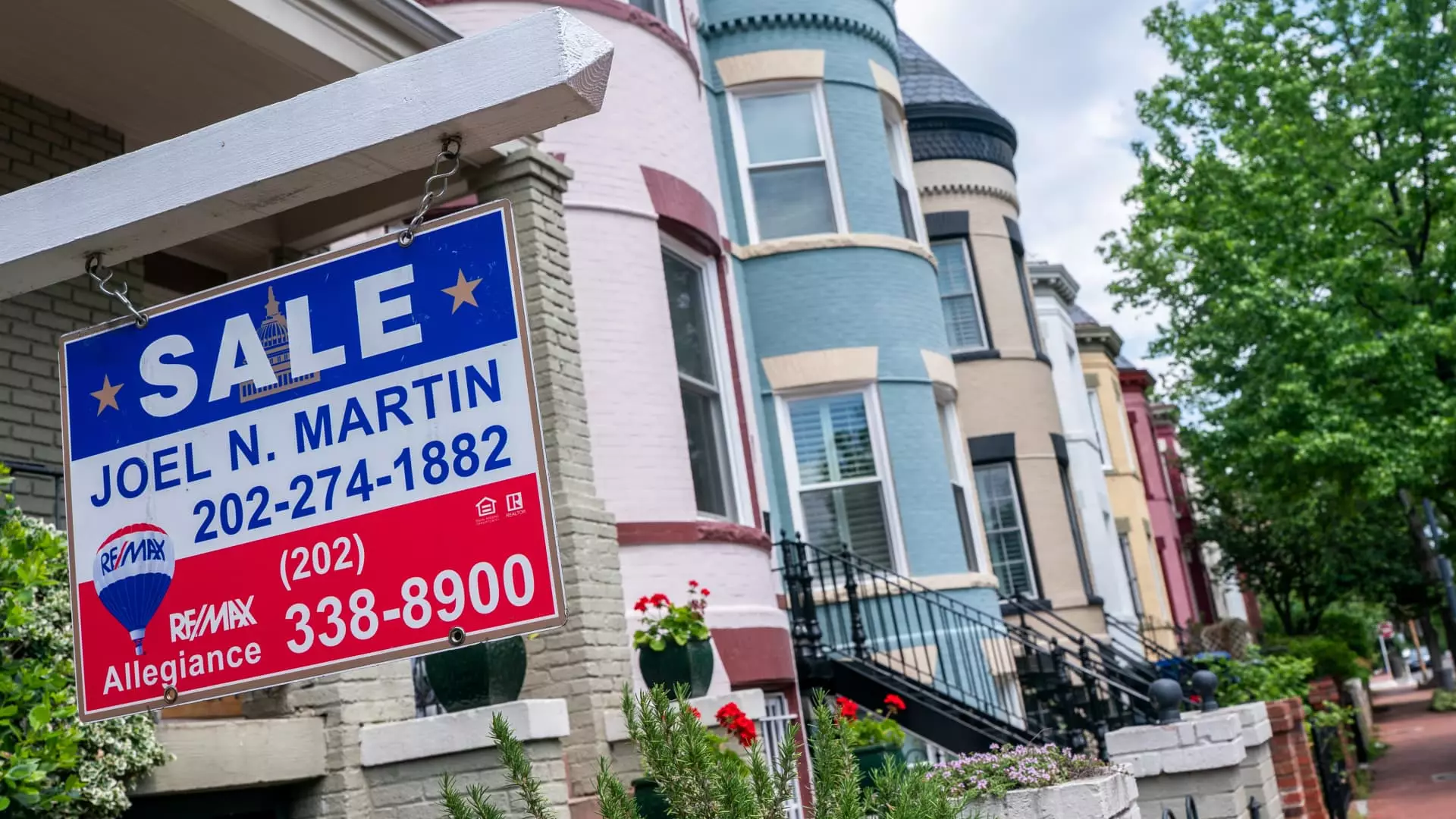The spring housing market has become a battleground for hope versus reality, presenting fresh hurdles as high interest rates stifle potential buyers’ activity. A report from the National Association of Realtors (NAR) revealed a stark 0.5% decline in the sales of previously owned homes within April, reaching an annualized rate of just 4 million units. This disheartening figure marks the slowest pace for the month of April since 2009, and the situation appears even bleaker when considering a year-over-year comparison showing a drop of 2%. In an era when expectations leaned towards a positive 2.7% increase, these results painfully underscore the ongoing struggles facing consumers.
The backdrop of rising mortgage rates, which surged in April, undoubtedly colored these numbers. Contracts that were executed prior to the rate hikes contributed to the closing sales in April, yet homeowners now face a market where pessimism clouds the horizon. Despite the noteworthy addition of seven million jobs to the economy over the past few years, as noted by Lawrence Yun, NAR’s chief economist, home sales languish at a mere 75% of their pre-pandemic vitality. This disparity raises a pressing question: how much longer can faltering consumer confidence be sustained amidst such unjustly high barriers to entry?
The Inventory Surge: A Double-Edged Sword
While a 9% month-over-month increase in inventory appears beneficial, it reflects a complex reality that poses risks of its own. Compared to last April, housing inventory has skyrocketed by nearly 21%, resulting in 1.45 million homes available by month-end. Though this may suggest relief, the current inventory represents only a 4.4-month supply—still below the critical six-month threshold considered a balanced market. The sudden explosion of listings could be seen as a remedy to price escalation; however, this may also signify a retreat by sellers who feel the pressure in a waning buyer’s market.
With the median price of an existing home now resting at $414,000—an increase of a mere 1.8% year-over-year—the growth indicates a significant shift. The struggle to maintain price appreciation, reaching its slowest expansion since July, suggests that the market is beginning to cool in areas traditionally known for rapid appreciation. Regions such as the South and West are feeling the pinch, with prices falling as inventory swells. Although Yun categorizes this environment as a “mild seller’s market,” the reality is obvious: consumers now wield more negotiating power than they’ve had in years.
The Changing Face of Homebuyers
The persistent narrative that first-time buyers continue to comprise 34% of the market remains both encouraging and perplexing. The rising cancellation rates, up to 7% from an average of 3% to 4%, reflect the turbulent emotions and uncertainty of prospective homeowners who may find themselves second-guessing their financial decisions amidst the chaos. The implications of this trend are troubling. Higher cancellation rates suggest the pressure of unfavorable conditions is forcing consumers to reconsider stale offers that are less appealing amid rising economic uncertainty.
Interestingly, the high-end market is showing some resilience, with homes priced over $1 million experiencing nearly a 6% uptick in sales compared to last year. Nevertheless, Yun’s observation regarding the diminishing gains in that segment hints at an underlying tremor within the wealth spectrum. The stock market’s recent volatility only complicates this scenario, leaving high-end buyers to reevaluate their investment decisions amidst uncertainty. The demographic shifts and changing motivations of buyers amid fluctuating economic stability are real issues that could ripple throughout the housing landscape.
As we peer through the fog of conflicting market signals, it becomes clear that the spring housing market is a paradox in itself. The ongoing interplay between rates, inventory, demand, and consumer behavior cultivates an atmosphere of uncertainty that leaves many speculating about the future. How long can the balance be maintained before external pressures drive the market to a tipping point? The implications of prolonged turbulence are profound not just for buyers and sellers, but for the economy at large.


Leave a Reply